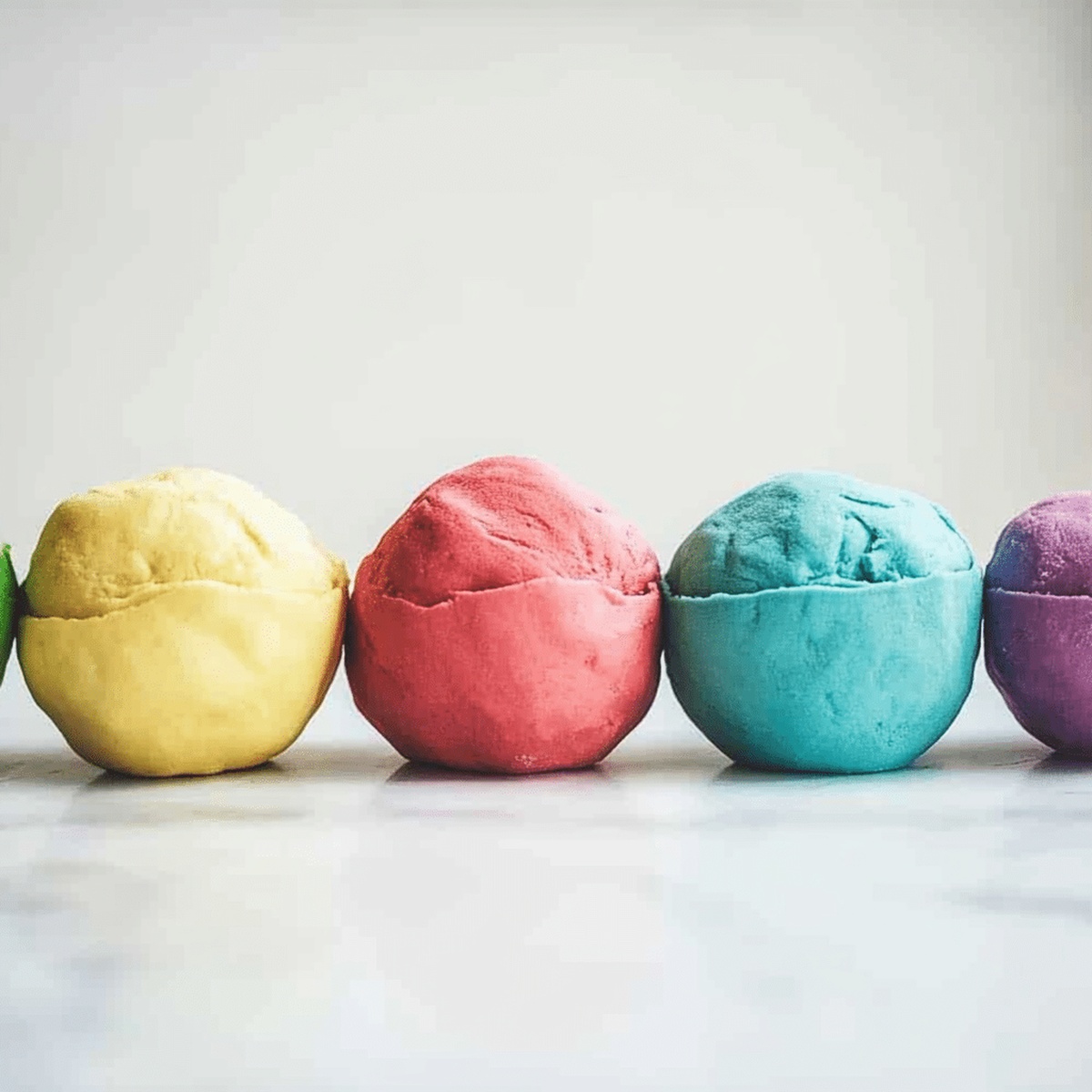Homemade Playdough Recipe for Soft Colorful Fun
Crafting magical homemade playdough sparks creativity in little hands while offering a delightful sensory experience.
Soft, pliable textures become an instant playground for imagination.
Colorful dough transforms ordinary afternoons into extraordinary moments of joy.
Children love exploring different colors and mixing unique shades during playtime.
Mixing simple ingredients creates a safe, non-toxic adventure that kids adore.
Smooth and stretchy, this recipe brings smiles and endless entertainment.
You’ll want to gather supplies and start creating magical memories right away.
What Makes Best Homemade Playdough Great
What You Need for Best Homemade Playdough
Dry Ingredients:Wet Ingredients:Coloring and Optional Ingredients:How to Mix Best Homemade Playdough
Step 1: Mix Dry Ingredients
In a large saucepan, combine:Whisk these ingredients together until they’re evenly blended.
Step 2: Add Liquid Magic
Pour into the dry mixture:Stir until the mixture looks completely smooth and well-combined.
Step 3: Cook and Transform
Place the saucepan on medium heat. Stir continuously as the mixture begins to thicken. Watch closely as the mixture transforms from liquid to a doughy consistency. The process takes about 3-4 minutes.
Step 4: Check Dough Readiness
The playdough is ready when it:Remove from heat immediately.
Step 5: Cool and Knead
Transfer the hot dough to a clean surface. Allow it to cool slightly so you can handle it comfortably. Knead the dough for 1-2 minutes. If it feels sticky, sprinkle a small amount of flour and continue kneading.
Step 6: Store and Preserve
Place the finished playdough in an airtight container or sealed plastic bag. It will stay fresh and soft for up to 2 months when stored at room temperature.
Smart Suggestions for Best Homemade Playdough
How to Save Best Homemade Playdough for Later
Pairing and Play Ideas for Best Homemade Playdough
Color and Texture Variations of Best Homemade Playdough
Best Homemade Playdough FAQs
Yes, this playdough recipe uses food-grade ingredients like flour, salt, and vegetable oil, making it completely non-toxic and safe for children to play with under adult supervision.
Cream of tartar helps create a smooth texture and prevents the dough from becoming sticky. While you can try substituting with lemon juice or white vinegar, cream of tartar works best for achieving the ideal playdough consistency.
Add food coloring directly to the mixture before cooking. For vibrant colors, use gel food coloring or add more drops until you achieve your desired shade. You can also create multiple colors by dividing the dough and adding different colors.
Kneading helps distribute heat evenly, removes any lumps, and creates a smooth, soft texture. It also helps blend the ingredients thoroughly, ensuring a consistent playdough that’s easy to mold and play with.
Print
Best Homemade Playdough Recipe
- Total Time: 10 minutes
- Yield: 8 1x
Description
Crafting magical homemade playdough brings pure childhood joy and creativity right into your kitchen. Colorful, pliable, and simple to make, this playdough recipe delivers sensory fun you’ll treasure for hours of playful exploration.
Ingredients
Main Dry Ingredients:
- 2 cups (250 grams) all-purpose flour
- 1 cup (240 milliliters) salt
- 2 tablespoons cream of tartar
Liquid Ingredients:
- 1 ½ cups (360 milliliters) water
- 2 tablespoons vegetable oil (or coconut oil)
Flavor and Color Additives:
- Food coloring (liquid or gel)
- 1 teaspoon vanilla extract (optional)
- A few drops of essential oil (optional, for scent)
Instructions
- Gather all ingredients in a large saucepan: flour, salt, and cream of tartar, whisking them together until thoroughly combined.
- Pour water, vegetable oil, and chosen food coloring into the dry mixture, incorporating any optional fragrance. Stir until the mixture appears uniform and smooth.
- Position the saucepan over medium heat, continuously stirring the mixture to prevent scorching and ensure even cooking.
- Monitor the consistency carefully as the mixture transforms, stirring consistently until it thickens and begins to form a cohesive ball shape.
- Once the dough starts pulling away from the pan’s edges and loses its sticky texture, immediately remove from heat.
- Transfer the warm dough onto a clean, flat surface, allowing it to cool slightly to a comfortable handling temperature.
- Gently knead the dough, working it with your hands to create a smooth, pliable texture. If the dough remains tacky, gradually incorporate small amounts of flour during the kneading process.
- Once the playdough reaches a soft, malleable consistency, prepare an airtight container or resealable plastic bag for storage.
- Seal the container completely, ensuring no air can enter, which will help preserve the playdough’s freshness for up to two months when stored at room temperature.
Notes
- Customize the color by experimenting with different food coloring combinations for vibrant, eye-catching playdough that sparks creativity.
- Adjust the texture by adding extra flour if the dough feels too sticky, ensuring a perfect, pliable consistency for little hands to enjoy.
- Make it allergy-friendly by substituting wheat flour with gluten-free alternatives like rice flour or cornstarch for children with sensitivities.
- Enhance sensory play by incorporating essential oils or spices like cinnamon for a subtle, engaging scent that makes playtime more exciting.
- Prep Time: 5 minutes
- Cook Time: 5 minutes
- Category: Snacks
- Method: Simmering
- Cuisine: Global
Nutrition
- Serving Size: 8
- Calories: 62
- Sugar: 0g
- Sodium: 3000mg
- Fat: 2g
- Saturated Fat: 0g
- Unsaturated Fat: 2g
- Trans Fat: 0g
- Carbohydrates: 12g
- Fiber: 0g
- Protein: 1g
- Cholesterol: 0mg


Jamie Granger
Recipe Developer & Food Writer
Expertise
Education
Culinary Institute of America
Jamie Granger turns ingredients into memories. With her recipes, she brings a fusion-forward flair to every creation.
Her dishes reflect the places she’s explored, the chefs she’s learned from, and the deep connection she has to food as a form of expression.
At Pass and Provision, Jamie develops recipes that balance flavor, health, and beauty, meals that don’t just satisfy your appetite but speak to your curiosity.